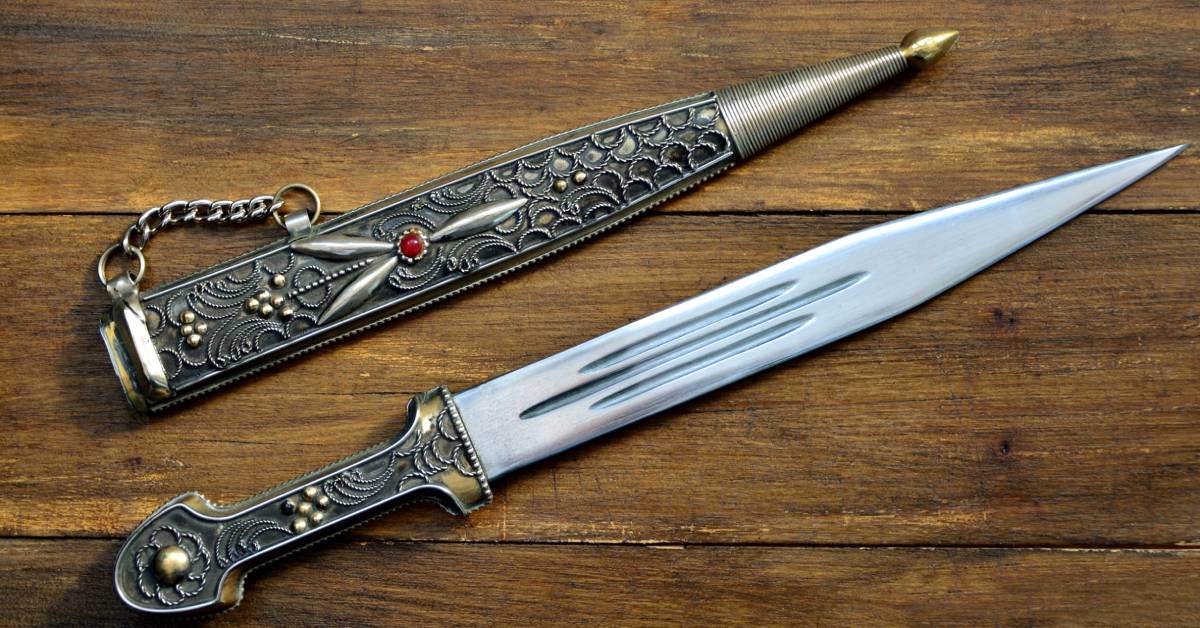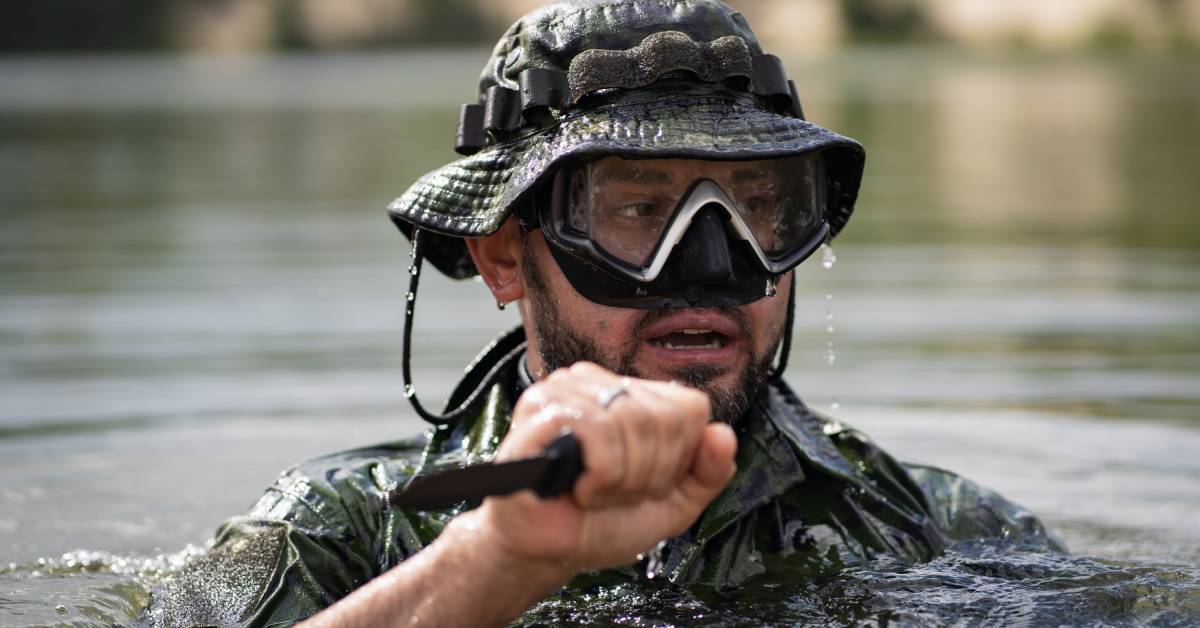Understanding What Makes a Good Combat Knife
Jun 20 2024 - 3:56
Combat knives aren’t something that most people need for everyday use. However, if you’re a collector, you need to understand what makes a good combat knife. In this guide, we’ll walk you through everything you need to know about choosing the right combat knife, from its historical roots to the key features that you should ensure yours has.
The Evolution of Combat Knives

A true understanding of this tool comes from knowing its history and how it has evolved. By learning about its past, you can better appreciate where these blades are at today.
Historical Overview
Combat knives have a rich and varied history, tracing their origins back to ancient civilizations. These weapons have evolved significantly over time. In ancient times, knives were essential for many tasks and for protection.
Over the centuries, combat knives have adapted to suit the needs of different societies. During the Middle Ages, knights wielded daggers alongside their swords. These daggers were for close combat and often had rich decorations. In more recent history, World War I and II saw the development of trench knives, which combined the utility of a knife with the brute force of brass knuckles.
Modern Innovations and Trends
Combat knives benefit from a range of modern innovations. Advances in metallurgy have led to stronger, more durable blades. Modern combat knives often feature ergonomic handles designed to offer a secure grip even in adverse conditions.
One notable trend in recent years is the growing interest in custom-made combat knives. Many enthusiasts actively seek unique, handcrafted pieces that combine traditional artisanship with modern functionality. Additionally, there has been a surge in the use of tactical knives. These knives offer versatility, making them useful in various combat and survival situations.
Key Features of a Reliable Combat Knife
Even though the overview on modern innovations gave you a taste of the key features of a combat knife, we want to go in-depth on what you should look for when picking out a combat knife of your own. This will make it easier to ensure you get the right tool for your personal needs.
Blade Material and Design
The blade is arguably the most critical component of any combat knife. High-quality combat knives typically use high-carbon steel, stainless steel, or Damascus steel. Each material has its own set of advantages:
- High-carbon steel has excellent edge retention and toughness, making it a popular choice for combat knives. However, it requires regular maintenance to prevent rust.
- Stainless steel offers great resistance to corrosion and is relatively low maintenance. It’s a reliable choice for those who may not have the time or inclination for frequent upkeep.
- Damascus steel is famous for its distinctive patterns and exceptional strength. Damascus steel is equal parts functional and aesthetically pleasing.
However, the material isn’t the only part of the blade you should pay attention to. The design of the blade also matters. Some common blade styles include the drop point, clip point, and tanto. Each style offers different advantages in terms of functionality and aesthetics. For example, the drop point blade has a convex curve that slopes to the tip, making it versatile and ideal for general use. Its broad shape offers excellent control and strength, popular for hunting and outdoor activities.
The clip point blade has a concave curve, giving it a thinner, more precise tip. This style is great for detailed tasks like piercing or slicing and is often on pocket and Bowie knives. And finally, the tanto blade, with its chisel-like tip and angular shape, can pierce tough materials. Its strong tip is best for tactical and combat situations, offering durability and penetration power.
Handle Ergonomics and Material
The handle is another crucial aspect of a combat knife. A well-designed handle should provide a comfortable and secure grip. There are many options for handle materials, but here are some of the more common options:
- G10: A fiberglass-based laminate that’s strong, lightweight, and resistant to moisture.
- Micarta: A composite material known for its durability and excellent grip.
- Kraton: A soft, rubber-like material that offers superior grip, especially in wet conditions.
Ergonomics also play a significant role in the handle’s design. Features like finger grooves and textured surfaces can enhance grip and control, making the knife easier to handle in various conditions, regardless of the materials used.
Tang and Full Tang Knives
The tang refers to the portion of the blade that extends into the handle. Full tang knives are best for combat applications because the blade runs the entire length of the handle, providing superior strength and durability. In contrast, partial tang knives may be less expensive but are generally not as robust.
Weight and Balance
A well-balanced combat knife offers better control and maneuverability. You should evenly distribute the weight between the blade and the handle to ensure ease of use. This is another reason why full-tang knives are superior for combat uses. The extension of the blade through the whole handle helps with weight distribution.
The Sharpness of the Blade
Owning a razor-sharp blade can make a significant difference in the effectiveness and safety of a combat knife. While any knife can be sharp if you put in enough effort, the initial sharpness is something worth considering. One that doesn’t start out very sharp will likely have trouble holding its edge over time, making it less useful in times of need.
How To Choose the Right Combat Knife

Now that you understand the key points of what makes a good combat knife, it’s time to learn about what you should consider to ensure you buy the right one.
Assessing Your Needs and Intended Use
Before making a purchase, consider your specific needs and how you intend to use the knife. Are you looking for a knife primarily for self-defense, or do you need a versatile tool for outdoor adventures? Understanding your requirements will help you narrow down your options.
Budget Considerations
Combat knives come in a wide range of prices, from affordable mass-produced models to high-end custom pieces. Set a budget that aligns with your needs and stick to it. Keep in mind that while higher-priced knives often offer better materials and artisanship, many mid-range options provide excellent value for the money.
Find the Right Dealer
Sometimes, low prices are too good to be true. That’s why you need to find a trusted dealer that sells high-quality options. Be sure to look into reviews and testimonials to know who you can trust. Lucky for you, The Knife Connection is the perfect place to start your search. We are a well-known knife provider that has Winkler knives for sale, a common choice for many law enforcement officials. Regardless of your need, The Knife Connection will have just what you’re looking for.
See More Resources:
10 Best Tips for Storing Your Hunting Knives
Ways To Open a Locked Door With Your Knife
What Kind of Material Is Good for Knife Sheaths?
The Ultimate Guide to Fixed-Blade Knife Materials
